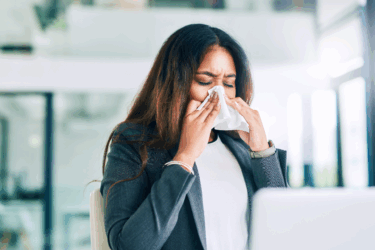A typical summer’s evening: The kids are running around the yard, catching lightning bugs and rolling down grassy hills. They run in for a bath and bedtime and are covered in mosquito bites. Wait, are those mosquito bites? Maybe it was a tick. How do you really know?
According to Nick DeBlasio, M.D., medical director at Pediatric Primary Care Center at Cincinnati Children’s Hospital Medical Center, distinguishing what’s what can be challenging. This goes for ticks as well — unless the tick is physically there, it’s very hard to tell. However, the treatment is about the same as long as your child is not allergic.
Instead of worrying so much about bites on kids, jump right in and start tending to it. Of course, all kids react differently to bites. One kid can have a huge swelling from a mosquito bite or bee sting, whereas another child won’t have any reaction at all.
“The main thing is good, symptomatic care,” says DeBlasio. “Really trying to control the symptoms, the itch, the swelling; to really just try and keep the kid as comfortable as he can be,” he adds.
For babies and kids, the treatment is rather similar. For any bug bite, you apply a layer of topical hydrocortisone cream or offer Benadryl for as early as 6 months old to help with the itching. If there is pain and swelling, use ice, and if the affected area can be elevated, then do that, too. Give it a couple of days to heal, but if you notice signs of infection coming on, take note.
“Definitely check to make sure [bites] are not infected,” DeBlasio says. “Around day two or three is when they can become infected and more painful.”
DeBlasio says infected bites are not that common, so simply monitor your child’s bites to make sure they aren’t over scratched, which can cause infection. If you have concerns, reach out to your pediatrician.
PROTECTING BABY
For babies younger than 2 months old, bug repellents are not recommended. Instead, dress babies in protective pants and long sleeves and avoid buggy outdoor exposure. For babies and kids older than 2 months, it’s safe to use repellents such as Deet (10 – 30 percent concentration; the higher the concentration, the longer it lasts), but spray it on the outside of their clothing rather than directly on the skin. As for little faces and hands, avoid spraying directly. Spray it on your hands first, then lightly apply to children.
Plan accordingly for times when the kids will be outside for extended periods like a family hike, camping trip or just a simple walk around your neighborhood. In addition, avoid sunscreen and insect repellent combos — it’s best to apply each separately since they carry unique application procedures.
KIDS VS. ADULTS
You wonder, how did so-and-so get so many bites and I didn’t? DeBlasio says kids get eaten up more than adults just by virtue of being outside more.
“Kids are running around, sometimes they don’t have shoes, oftentimes you have kids wearing bright colors, stuff like that,” he says. “Those are things that make kids a bit more vulnerable but they are not more sensitive to the bite,” he says.
Of course, if your kid has a known allergen always keep an epipen on-hand. If he gets a sting, it’s time to use it.
“That’s what they’re there for,” assures DeBlasio.
BITE PREVENTION
AVOID STAGNANT WATER – Mosquitoes love hanging out near water.
AVOID FRAGRANCES – Hair and body sprays and colognes should be avoided if you plan to be outdoors.
COVER FOODS – This keeps bugs from swarming around.
WEAR CLOSED SHOES – Cover little feet with socks and shoes.
PATCH TORN SCREENS AT HOME – Go through your home to temporarily patch torn screens until they can be mended.
WEAR NEUTRAL COLORS – Bees love bright colors and floral prints. Opt for light colors instead.
PLAY OUTSIDE IN MORNING – Bugs love hot temps, so let the kids play outside in the morning before temps heat up.





